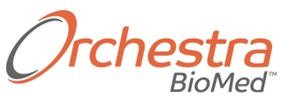initial shareholders prior to HSAC2’s initial public offering (the “HSAC2 IPO”) agreed to subject (i) the 4,000,000 shares of Company Common Stock issued to HSAC2’s initial shareholders prior to the HSAC2 IPO (the “Insider Shares”) and (ii) the 450,000 shares of Company Common Stock purchased in a private placement simultaneously with the HSAC2 IPO (the “Private Shares”) to a lock-up for up to 12 months following the Closing, and the Sponsor forfeited 50% of its 1,500,000 warrants in HSAC2 purchased upon consummation of the HSAC2 IPO (the “Private Warrants”), comprising 750,000 Private Warrants, for no consideration, immediately prior to the Closing (the “Sponsor Forfeiture”). Pursuant to the terms of the Merger Agreement, immediately following the Sponsor Forfeiture and prior to the Closing, HSAC2 issued 750,000 warrants to purchase Company Common Stock to eleven specified employees and directors of Legacy Orchestra (the “Officer and Director Warrants”). The Officer and Director Warrants have substantially similar terms to the forfeited Private Warrants, except that 50% of the Officer and Director Warrants will become exercisable 24 months after the Closing and the remaining 50% will become exercisable 36 months after the Closing, in each case, subject to the holder’s continued employment or service with the Company or one of its subsidiaries through such date. As of the issuance date of these financial statements, 90,000 Officer and Director Warrants have been forfeited as a result of the departures of an executive officer and a director of the Company. On April 12, 2023, the Initial Milestone Event was achieved, and, as a result, 500,000 of the Forfeitable Shares are no longer subject to forfeiture.
In connection with the Business Combination, existing Legacy Orchestra stockholders also had the opportunity to elect to participate in an earnout (the “Earnout”) pursuant to which each such electing stockholder (an “Earnout Participant”) may receive a portion of additional contingent consideration of up to 8,000,000 shares of Company Common Stock in the aggregate (“Earnout Consideration”). Each Earnout Participant agreed to extend their applicable lock-up period from 6 months to 12 months after the Closing, pursuant to an Earnout Election Agreement and such Earnout Participants will collectively be entitled to receive: (i) 4,000,000 shares of the Earnout Consideration, in the aggregate, in the event that, from the time beginning immediately after the Closing until the fifth anniversary of the Closing Date (the “Earnout Period”), the Initial Milestone Event occurs; and (ii) an additional 4,000,000 shares of the Earnout Consideration, in the aggregate, in the event that, during the Earnout Period, the Final Milestone Event occurs. Approximately, 91% of Legacy Orchestra stockholders elected to participate in the Earnout. On April 12, 2023, the Initial Milestone Event was achieved, and each Earnout Participant was issued their Pro Rata Portion (as such term is defined in the Merger Agreement) of 4,000,000 shares of Company Common Stock, resulting in a total of 3,999,987 shares of Company Common Stock being issued (less than 4,000,000 due to rounding).
Simultaneously with the execution of the Merger Agreement, HSAC2 and Legacy Orchestra entered into separate forward purchase agreements (each, as amended, a “Forward Purchase Agreement” and, together, the “Forward Purchase Agreements”) with certain funds managed by RTW Investments, LP (the “RTW Funds”) and Covidien Group S.à.r.l., an affiliate of Medtronic plc (“Medtronic” and the RTW Funds, each a “Purchasing Party”), pursuant to which each of the Purchasing Parties agreed to purchase $10 million of ordinary shares of HSAC2 (“HSAC2 Ordinary Shares”) immediately prior to the Domestication (as defined below), less the dollar amount of HSAC2 Ordinary Shares holding redemption rights that the Purchasing Party acquired and held until immediately prior to the Domestication (such HSAC2 Ordinary Shares either purchased from HSAC2 or acquired and held until immediately prior to the Domestication, the “Forward Purchase Shares”). The RTW Funds completed their purchases of HSAC2 Ordinary Shares under their Forward Purchase Agreement on or before July 22, 2022. Medtronic completed approximately $9.9 million of purchases of HSAC2 Ordinary Shares under its Forward Purchase Agreement on or before January 20, 2023. Medtronic subsequently completed $0.1 million in purchases of HSAC2 Ordinary Shares and/or Company Common Stock on or before January 30, 2023.
Simultaneously with the execution of the Merger Agreement and Forward Purchase Agreements, HSAC2, Legacy Orchestra and the RTW Funds entered into a Backstop Agreement (the “Backstop Agreement”), pursuant to which the RTW Funds, jointly and severally, agreed to purchase such number of HSAC2 Ordinary Shares at a price of $10.00 per share to the extent that the amount of cash remaining in HSAC2’s working capital and trust account as of immediately prior to the closing of the Merger was less than $60 million (which calculation excludes amounts received pursuant to Medtronic’s Forward Purchase Agreement or are otherwise held in HSAC2’s trust account established pursuant to the HSAC2 IPO (the “HSAC2 Trust Account”) in respect of Medtronic’s Forward Purchase Shares, but is inclusive of amounts received pursuant to the RTW Funds’ Forward Purchase Agreement and otherwise held in the HSAC2 Trust Account in respect of the RTW Funds’ Forward Purchase Shares). Pursuant to the Backstop Agreement, the RTW Funds purchased 1,808,512 HSAC2 Ordinary Shares on January 25, 2023, immediately prior to the Domestication.
